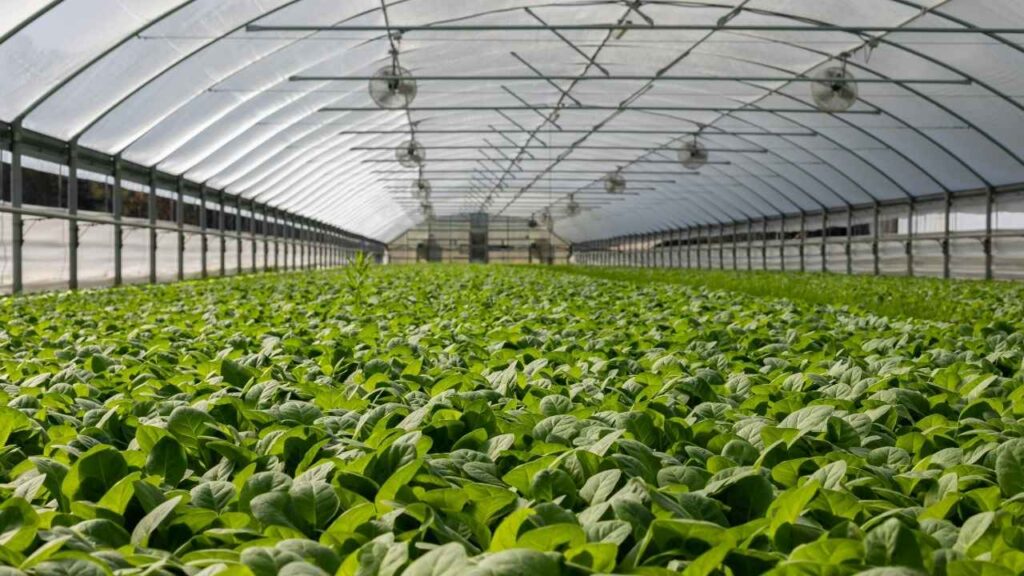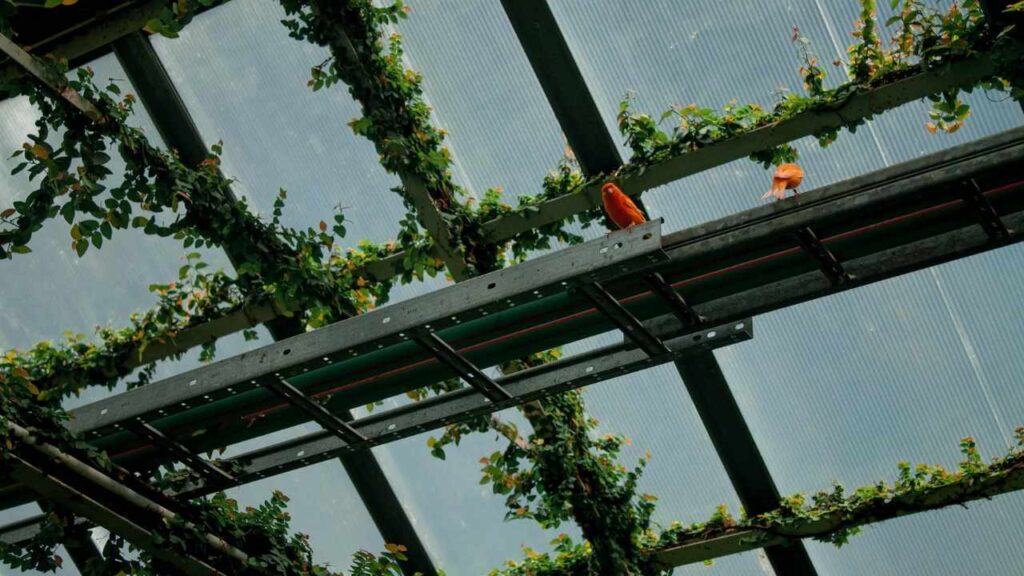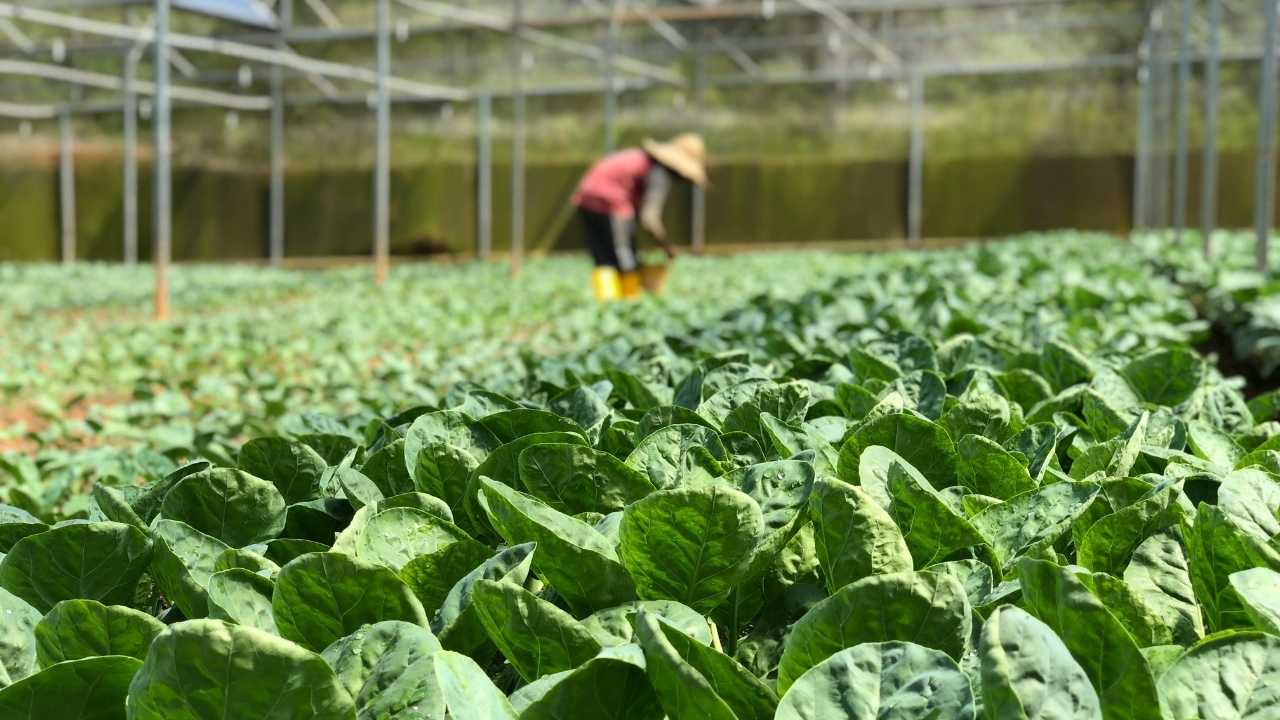If you’re interested in a greener lifestyle, building a rooftop greenhouse can be an excellent way to grow fresh produce in an urban environment. While rooftop greenhouses offer many benefits that appeal to homeowners and buyers alike, there are also challenges to consider. In this article, we focus on the disadvantages of rooftop greenhouses—including structural concerns, high costs, environmental impact, accessibility difficulties, legal restrictions, and ongoing maintenance requirements. Our goal is to help you make an informed decision about whether a rooftop greenhouse is the right fit for your needs.
1. Structural Concerns
Weight Load and Building Integrity
Perhaps the most serious problem with a rooftop greenhouse is the added weight it imposes on a building. Greenhouses not only need a strong framework, but also come with a large amount of heavy materials like soil, water storage systems, and plants. Most buildings are not built to carry such additional weight, which can cause structural damage and potentially cause the building to collapse. Another structural engineer needs to determine whether the addition of a rooftop greenhouse is too discouraging for the building underneath.
Wind and Weather Resistance
Rooftop greenhouses are also subjected to higher winds, storms and extreme conditions than ground greenhouses. The impact of this exposure can be damaging, resulting in broken glass panels, flayed plastic conferring, or total structural failure in high wind events. To counter this threat, the greenhouse needs to be constructed from reinforced materials, which can raise the price considerably.
Waterproofing and Drainage Issues
The water leaking is another big issue on the rooftop greenhouses. If not installed properly, waterproofing will result in leaks that can damage the building structure, leading to mold, rot, and degradation of roofing materials. Proper drainage systems are also important to avoid the pooling of water, which can cause structural damage or flooding to interior spaces beneath the greenhouse.
2. High Initial and Maintenance Costs
Construction Costs
To build a rooftop greenhouse, you must make an initial financial investment. The costs include:
- Structural reinforcements
- Beyond: Lightweight materials specialized
- Climate control systems with proper insulation
- Waterproofing and drainage service solutions
- Contracts and professional advice
Rooftop greenhouses, unlike their ground-level counterparts, must be built by more complex engineering and construction techniques, and thus are expensive to build with.
Operational and Energy Costs
High operating costs are also incurred once constructed, Rooftop greenhouse. Large-scale heating and cooling systems represent a significant challenge because rooftop facilities require stable growth conditions. The management of rooftop HVAC systems stands as crucial because the rooftop environment exposes plants to extreme temperatures during both summer and winter months. These systems use a lot of power, leading to high electricity and maintenance costs.
3. Accessibility and Logistics Challenges
Limited Space
Space for rooftop greenhouses is limited to the degree of the building. However, rooftop greenhouses are not going anywhere as they cannot expand. This limits the diversity and volume of crops that can be grown, thus making large-scale agriculture impractical.
Difficult Transport and Labor Requirements
It can be logistically complex getting materials like soil, water and plants to the roof. Most have neither a freight elevator nor quick access to the roof and manually carrying supplies up multiple flights of stairs can be labor-intensive and time-consuming. This difficulty particularly complicates typical greenhouse management (Han et al. 2020), especially for commercial enterprises.
Irrigation and Water Supply Issues
A rooftop greenhouse needs a good irrigation system to keep the plants hydrated. And rooftops might not always have easy access to plumbing or water sources, posing challenges for irrigation. Asking or collecting rainwater can be the solution, but it adds135º more weight and needs special storage to work. On the other hand, the reliance on municipal water raised the operational costs.

4. Environmental and Climate Challenges
Extreme Temperature Fluctuations
Temperatures on rooftops will swing more dramatically than those near the ground — In summer, rooftop greenhouses can get too hot, while during the colder months they might get too cold. Plants are stressed, which results in reduced yield potential, or even death of the crop, without advanced climate control systems.
Sunlight and Shading Issues
Although roofs get a lot of sun, too much direct sunlight is not good. Heat stress and dehydration can occur without proper shading solutions, as plants need protection from these harsh weather conditions. In contrast, structures around the rooftop can block sunlight and limit its exposure—their presence would compromise the plants’ growth.
Storm and Weather Damage
Rooftop greenhouse is very susceptible to adverse weather condition like hail, heavy fall of snow and strong winds. These environmental factors may cause damage to greenhouse structures and interrupt the growth cycles of plants. Other upgrades like windbreaks and snow management systems may be needed that create greater maintenance, labor, and costs.
5. Legal and Zoning Restrictions
Permit and Regulatory Compliance
Not every building is legally allowed to have a rooftop greenhouse. Most cities have zoning laws and building regulations that need to be adhered to. Getting permits for such rooftop greenhouses can involve lengthy and expensive approval processes with local authorities.
Fire Safety and Emergency Regulations
Another area of regulatory concern is fire safety. Greenhouses are full of tinder: wood, plastic, dry plant material. Fire departments may even place a tight grip on rooftop structures, demanding the inclusion of sprinkler systems or fire-resistant materials, which can lead to more expenses.
Landlord or Homeowner Association (HOA) Restrictions
And for people living in apartment buildings or condominiums, those rooftop greenhouses might be limited by landlord contracts or HOA restrictions. These organizations often disallow structural changes to rooftops because of liability risks.
6. Maintenance and Management Difficulties
Pest and Disease Control
Like any other garden, rooftop greenhouses are not free from pests and plant diseases. In turn, the isolated location can sometimes complicate the introduction of natural predators to control pests. Infestations in rooftops can also be trickier to manage than at ground level, with limited access and scope for intervention.
Technical Expertise Required
Maintaining a rooftop greenhouse involves expertise in hydroponics, soil management, irrigation, climate control, and pest control, among others. With no expertise, which is no rentals at best creates the need for a perfect growing area creating crop loss and investment loss.
Repair and Maintenance Challenges
Proper maintenance of your rooftop greenhouse is also required if the structure to be properly held. Fixing leaks, replacing broken glass and servicing climate control systems all require skilled labor, which can be expensive and time-consuming.
Advantages of a Rooftop Greenhouse
Rooftop greenhouses offer a unique, sustainable solution to use urban space for food production. Rooftop greenhouses are an innovative solution to food production, environmental sustainability, and living conditions as cities grow and green spaces become scarce. Despite some issues with making a rooftop greenhouse happen, for many people and companies the advantages are greater than the downsides. This article will take a look at the rooftop greenhouse benefits that contribute to environmental sustainability, economic vitality, food security, and building efficiency.

1. Efficient Use of Space
Maximizing Underutilized Rooftop Areas
Limited urban space for traditional farming In urban centers, population density is notoriously high. Rooftop greenhouses enhance semi-productive areas of rooftops that would otherwise not be cultivated by establishing an entirely new land use substrate, enabling water, energy, and nutrient efficient agriculture without having to expand into new ecosystems.
Urban Agriculture and Local Food Production
Rooftop gardens decrease the importation of produce, which supports local food systems, thereby reducing transportation costs for long-distance food distribution.
2. Environmental Benefits
Reduction of Urban Heat Island Effect
Benefits of Rooftop Greenhouses for Urban heat island. The heat is absorbed through the plants and soil, cooling the ambient atmosphere and helping to make cities more livable.
Improved Air Quality
Plants in a rooftop greenhouse take in carbon dioxide while releasing oxygen, helping to clean the air in urban areas. Furthermore, plants filter harmful pollutants thereby improving general air quality [7].
Stormwater Management
By absorbing the rainwater of the building, a rooftop greenhouse can contribute to preventing overloading of the urban drainage systems and limit the risk of floods. When stormwater is managed effectively in an urban landscape, it will eliminate excess runoff and soil erosion.
Reduction in Carbon Footprint
Growing food near its point of consumption in a rooftop greenhouse cuts down on transportation and packaging, which lowers (greenhouse gas) emissions. This is beneficial for the environment and assists with tackling climate change.
3. Energy Efficiency and Building Benefits
Improved Insulation and Energy Savings
A rooftop greenhouse adds an extra layer of insulation to a building, allowing for decreased heating and air conditioning costs. In colder months, the greenhouse retains heat and helps keep the building warm. In summer it offers shade and a natural cooling that leads to less usage of air conditioning.
Renewable Energy Integration
Some rooftop greenhouses combine renewable energy sources, like solar panels or wind turbines, into a self-sustaining model. This not only further lowers energy costs, but also supports sustainable urban development.

4. Economic and Financial Advantages
Cost Savings on Food Expenses
At the same time, the project began offering a rooftop greenhouse where people and businesses could grow fresh produce, cutting grocery bills. Especially in urban areas where organic, fresh produce can be pricey.
Commercial and Business Opportunities
Rooftop greenhouse for businesses can be profitable. Rooftop greenhouses can provide grocery stores, restaurants, and farmers’ markets with a stock of fresh, locally grown produce, which bolsters their sustainability efforts and attracts environmentally-minded customers.
Increase in Property Value
Sustainable features and energy savings added by rooftop greenhouses make buildings more attractive to tenants and buyers. This creates a greater scarcity on the market, are which normally pushes up property values and rental returns.
5. Health and Well-Being Benefits
Access to Fresh, Organic Produce
Rooftop garden/microfarms can increase the number of opportunities people have to eat healthy, leafy greens, and some are so highly-nutrient dense that they help people feel full even faster than a junk-food diet, thus combating obesity and suspected “metabolism-repair” when transitioning from junk to natural healthy food.
Mental Health and Stress Reduction
We all know that gardening and greenery that’s around us tend to reduce stress, anxiety and depression. A greenhouse on the roof is a reprieve from the urban rush and offers an antidote to stress.
Community Engagement and Education
Rooftop greenhouses can also be used as a teaching tool for schools, community organizations and urban farming programs. They teach kids about sustainability, agriculture and healthy living through hands-on learning.
6. Enhanced Food Security and Sustainability
Reliable Food Production in Urban Areas
Rooftop greenhouses also increase urban food sovereignty through localized cultivation and lower reliance on external food networks to care for food security needs in vulnerable communities, improving overall resilience for an already food insecure sector of the population.
Hydroponics and Aquaponics Integration
Many rooftop greenhouses use high-tech farming methods like hydroponics and aquaponics that use less water and soil than old-fashioned agriculture.An ingenuity of these systems is that they optimize efficiency and sustainability, making food production more feasible in urban environments.

Conclusion:
Greenhouses on rooftops, Why Greenhouses on rooftops are advantageous Efficient Space Use and other benefits of Rooftop Greenhouses. They improve urban farming at reduced carbon footprints with community involvement.
But it is important to note the challenges that come with it, such as higher costs, structural issues, challenges in accessibility and climate control. Success demands a proper plan, investment, and expertise.
In the end, if the benefits eclipse the drawbacks in a particular context, a well-designed and well-implemented rooftop greenhouse can be an asset and sustainable addition to urban environments.
Difference Table
| Aspect | Advantages | Disadvantages |
| Space Utilization | Maximizes unused rooftop space | Limited by building structure and available area |
| Cost | Can lower food expenses and increase property value | High initial investment and maintenance costs |
| Energy Efficiency | Provides insulation, reduces heating/cooling costs | Requires additional infrastructure for support |
| Food Production | Fresh, organic produce, enhances food security | Limited growing area and potential irrigation issues |
| Community Benefits | Encourages urban farming and education | Requires technical expertise and labor-intensive management |
| Sustainability | Reduces carbon footprint, improves air quality | High energy consumption for climate control |
| Climate Challenges | Can utilize hydroponics and aquaponics for efficiency | Vulnerable to extreme weather and temperature fluctuations |
FAQs
What are the negatives of a green roof?
The downside is that green roofs can be just a bit more expensive than the traditional type. One of the most significant of them is being the additional assistance needed to manage the higher volume. But it feels that this increased short-term cost is more than compensated for by the fact that the roofs pay for themselves in the long term.
What are the problems with rooftop gardens?
Wind and Sun Exposure: Rooftops are generally more exposed to wind and sunlight than conventional gardens. Strong winds injure plants and lead to dehydration; intense sun can cause heat stress. You can solve these problems by putting up windbreaks made from trellises, fences or taller plants to protect more delicate plants.
What are the 5 disadvantages of a greenhouse?
Cons of Greenhouse Farming
- Production costs are expensive.
- The initial construction costs for building such a structure are high.
- No natural pollination.
- Knowledge to a high degree is a mandatory requirement.
- The operations can only focus on cultivating high-valued agricultural products.
What is one disadvantage of a collapsible roof greenhouse?
One issue with retractable-film designs is long-term wear on drive lines, pulleys and cables, or rack-and-pinion systems. The glazing in retractable-film systems has limited UV-exposure as the panels are not open-panel but can have both sides of the side wall glazing exposed to UV-light.
Why are greenhouses bad for the environment?
The high-intensity agricultural practices that take place in greenhouses often destroy local environments by overexploiting water reserves and contaminating rivers and soils with nutrients, pesticides and plastic waste. But the effect of these seas of plastic on local temperatures can be even more dramatic — and often positive.
